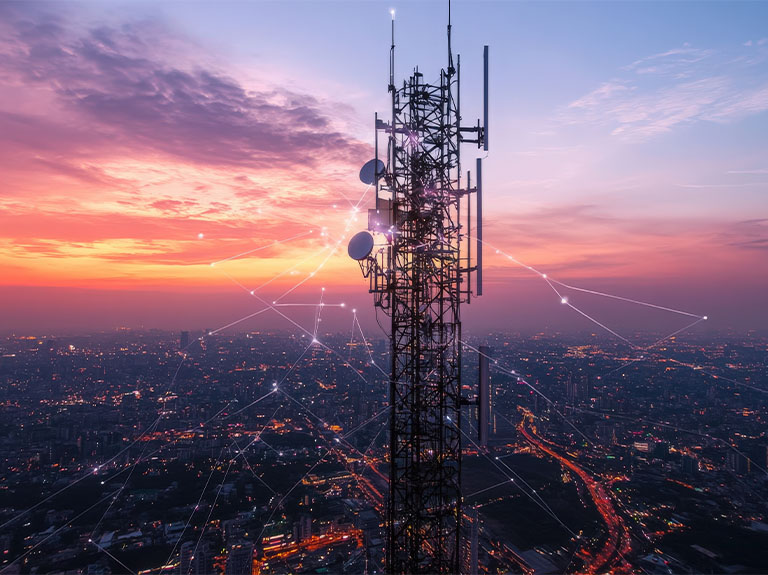The Bottom Line: Yes, 5G will ultimately change for the better how we live, work and play, but is everyone ready for the new security threats it could bring to the table? AT&T is. We’ve already been laying the foundation with our software-defined network (SDN) and are at the forefront for discussions around future security standards. When 5G networks are ready to take centerstage, we’ll be right there to help secure it.
Why it matters: We’re at the cusp of the 5G wireless network revolution. Once it is in full swing, it will be fast. It will be ubiquitous. And like the transition from 3G to 4G before it, it will change the way we work, play and live, paving the way for the fourth industrial revolution, which technology experts and analysts say will be served by an Internet of Things (IoT) explosion. Its deployment trajectory is becoming somewhat of an unstoppable force.
New technologies that include everything from connected cars and cities to augmented and virtual reality, and ultra-high-definition video will go from proof-of-concept to public adoption thanks to the huge leaps in capacity and speed that future 5G will offer. AT&T’s 5G network will be available to its subscribers in parts of 21 cities across the U.S. this year. Performance will continue to improve, and the pace of adoption will accelerate next year.
But… (There’s always a ‘but,’ isn’t there?):
None of this technological transformation can become a reality without pace-for-pace advancements in cybersecurity. With the massive increase in connectivity that will eventually be possible, as the 5G network becomes the operational backbone of society and culture, the vast quantity of data traversing 5G networks will increase the size of the threat surface as well as create opportunities for bad actors to weaponize the currently known, manageable threats. We have been preparing, because we have been architecting 5G cybersecurity for several years now.
Security industry insiders call our cybersecurity chops “the real thing” for a reason. Our reputation for security innovation is known primarily with insiders, but that’s changing with each new city to join the AT&T 5G network., All carriers deploying 5G will launch with cybersecurity standards, standards that we’ve helped develop such as roaming protection proxies, Home Network Authentication and Subscriber Identity Privacy.
But even beyond those, we’re driving proprietary security innovation within our own walls thanks to new capabilities that our SDN enables.
We can do this because we are able to study multitudes of data streams to help detect threats to our network. Our work in machine learning is our secret sauce. With it we can analyze approximately 670 billion flows of network data for anomalies – and see 110 billion potential probes for vulnerabilities – across our global IP network every day.
The evidence is in the foundation we’ve already laid for 5G on our SDN and unique cloud security capabilities. It is powered by the Open Network Automation Platform (ONAP), which puts us in a unique position to address cyber threats at the 5G Radio Access Network (RAN), core, and edge of the network.
On the first day 5G is fully deployed, we’ll be able to detect threats AND respond to threats in near real-time, patching vulnerabilities and helping prevent attacks from being successful. With SDN and ONAP on our toolbelt, we can:
- Virtualize our security controls so that we can dynamically orchestrate security across the network at a global scale.
- Automate security policy throughout the network using machine learning technology to fuel our best in class threat analytics platform.
- Improve agility by creating technology that automates the process of instituting firewalls and micro-perimeters to protect applications and deploying technologies that help prevent lateral movement from attackers.
- Filter and scrub Distributed Denial of Service (DDoS) attack traffic within the network in a highly-automated fashion – without customers having to deploy or manage any infrastructure.
But, nothing is hacker-proof forever: Cybersecurity will continue to be a challenge that requires everyone on the chain to assess and create new processes, tools and technology to address it. As new threats emerge, we will continue to apply more resources and technologies than ever before to help protect our network and its users from both known and unknown cyber threats—for 5G and beyond.


